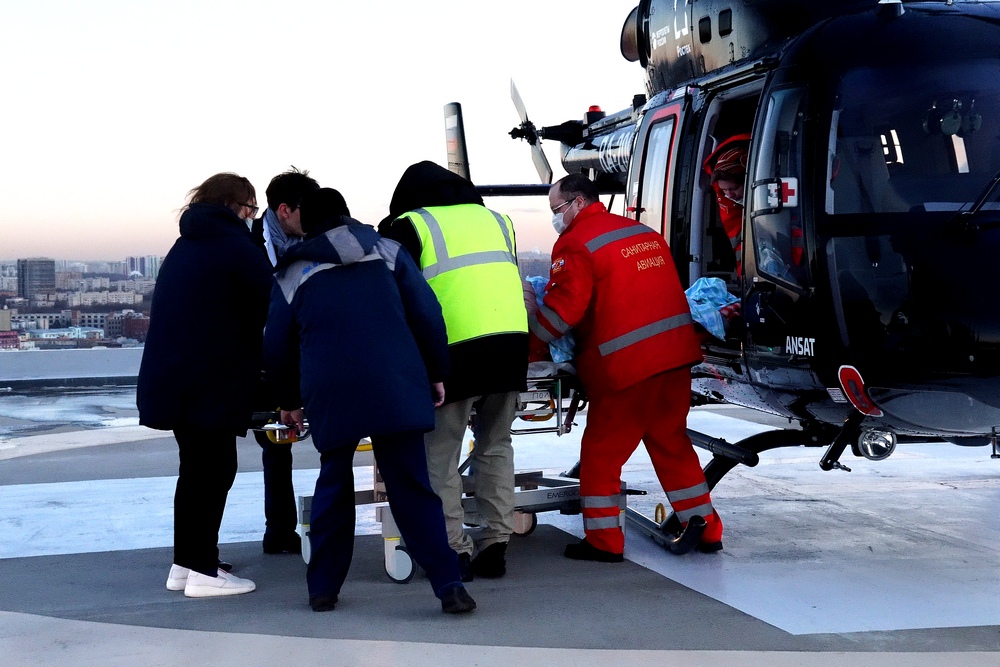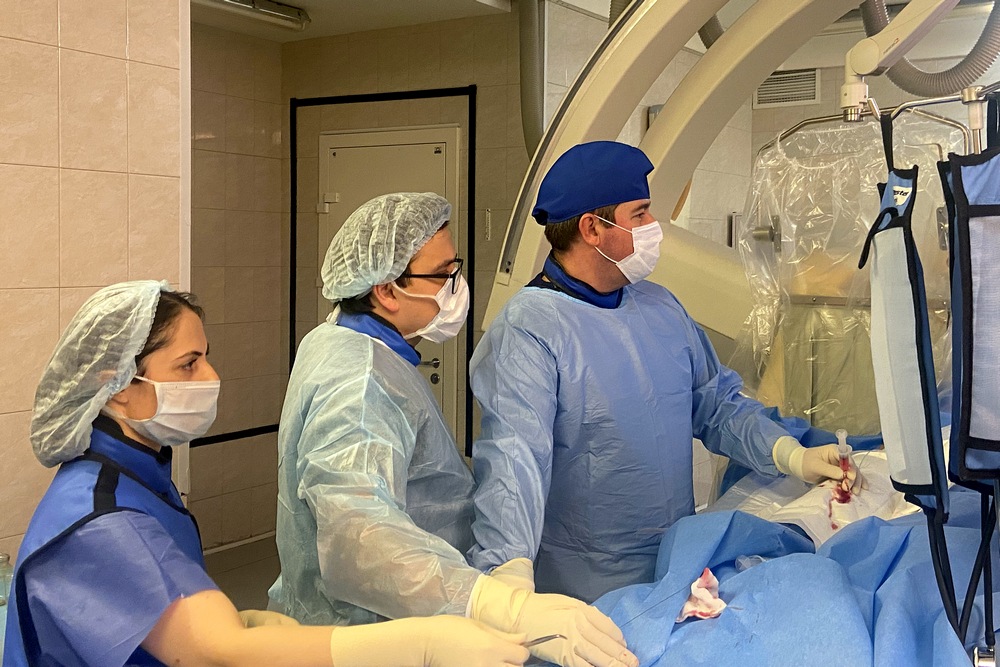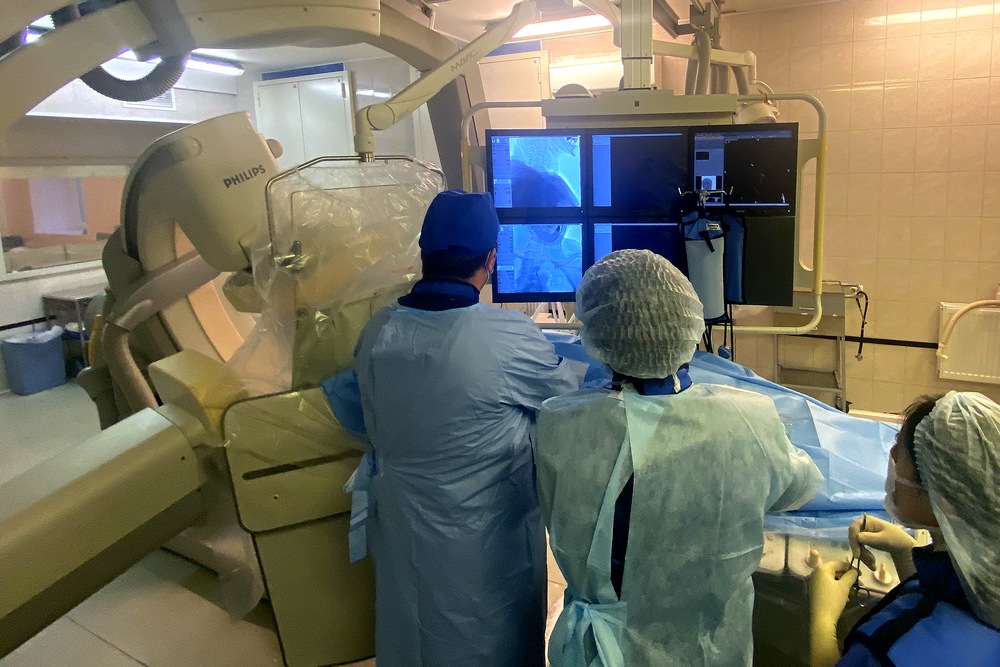
On November 22, the air ambulance urgently transported a patient with a rare vascular disease from Ivanovo to Almazov Centre. A 44-year-old woman was diagnosed with a basilar artery aneurysm (bulge of an artery wall as a result of thinning or stretching). According to doctors, basilar artery aneurysm is extremely rare and occurs in 10% of all aneurysms. The mortality rate at primary rupture of the aneurysm reaches 40%.
The case was complicated since the aneurysm was hard to reach. Open surgery was associated with an extremely high risk of injury to the brain. Modern neurosurgery uses the endovascular method in such cases.
 |
 |
| Cerebral angiography before surgery (basilar artery aneurysm) | |
“We received an urgent request from our colleagues in Ivanovo via our telemedicine service. Having analyzed the situation, we decided to transport the patient to St. Petersburg as soon as possible, considering her condition,” explains Konstantin Samochernykh, Director of Polenov Neurosurgical Institute (branch of Almazov Centre).
After an additional examination at Polenov Neurosurgical Institute, the patient underwent endovascular embolization of the basilar artery aneurysm with detachable coils as well as chemical angioplasty for spasm of the basilar artery and vertebrobasilar vessels.
 |
 |
| Cerebral angiography after surgery (fully embolized aneurysm) | |
During the surgery, guide catheters were introduced into the vertebral artery through femoral artery puncture. Considering that the aneurysm neck was very wide, two microcatheters were used to occlude the aneurysmal sac. Neurosurgeons introduced two interlocking detachable coils forming a stable set of coils in the aneurysm cavity.

The main goal of treatment was to prevent re-rupture of the aneurysm (this risk doubles during the first month). With a second rupture, the mortality is 50%.
Postoperative CT scan showed no hemorrhage, thereby confirming the success of the complex surgical treatment. The patient suffered no mental or physical impairments. In the future, she will need to be regularly monitored, and six months later she will have control angiography and CT to make sure that the aneurysm is totally excluded from the circulation.

